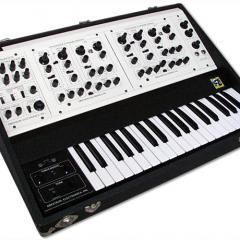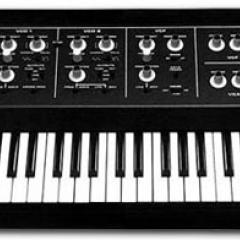Oberheim SEM

The SEM was Oberheim's first official analog synthesizer. SEM stands for Synthesizer Expander Module. It was conceived with the notion of being used as a backup synth connected to a sequencer for layering or beefing up your existing monophonic analog synths. The SEM itself was a keyboard-less module with two analog oscillators, a 2-pole multimode filter, ADR envelopes, and an LFO. Each of the two oscillators offer triangle or rectangular waveforms. But unlike the Moog and ARP counterparts of the time, the SEM's 2-pole (12dB/oct) filter was a little thin. The others used a 4-pole (24dB/oct) filter which has a steeper roll-off and so it sounds much better. But the SEM's filter offered many modes in addition to low-pass, including high-pass, band-pass and band-reject.
Although SEM modules and other external controllers could be inter-connected, the SEM is not a patchable synth module like other modular type synths of the time. Its signal routing was more or less, hard-wired. The SEM was for all purposes, an accessory. But Oberheim jumped into the synth market by coupling SEMs with a keyboard and an analog sequencer into a compact, white, little performance synth. That led to the Two Voice, Four Voice and Eight Voice models. And from there, came the rest of Oberheim's history of instruments. Some earlier SEMs have several differences in their circuit design that affects the envelopes, filter, etc. If your SEM has "1080" written inside, it's an early one. If you see "1180", it's the "normal" one that most people know and love.

Pictured just above is the Polyphonic Synthesizer Programmer, introduced in 1976. It could be used with the SEM and the Two-, Four-, and Eight-Voice models. The unique feature this programmer had (for its time) was the ability to store the knob settings of a SEM modules parameters. Neither Moog nor ARP could offer memory/patch storage like this at the time. The PSP could accommodate up to 8 SEMs or, in other words, the Eight Voice. SEMs have been used by Jan Hammer, Josef Zawinul, and filmaker/composer John Carpenter.
Demos & Media

Specifications
Resources
Images from Audio Playground Synthesizer Museum and Perfect Circuit Audio.
Additional info provided by Kevin Lightner's Synthfool.













